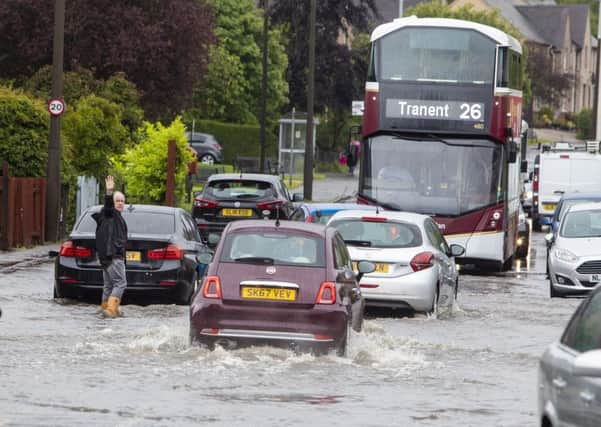Douglas Millican: Climate change water strategy must stand the test of time


As the global climate crisis deepens, evidence shows that its impact on our country’s weather patterns is having an ever-greater bearing on our public water and waste water services and we must move boldly and decisively to ensure we can cope well with future challenges.
Nowhere is the effect of our changing climate and weather more evident than in our relationship with one of our most precious resources – Scotland’s water.
Advertisement
Hide AdAdvertisement
Hide AdDuring three summer months in 2019, extraordinary amounts of rain placed unprecedented pressure on our vital sewer networks.
The sheer intensity of the downpours meant the capacity of this network was simply overcome in some areas. Half a month’s worth of rain fell in Edinburgh in the space of three hours. In Stirling, where someone was spotted surfing down the street, the equivalent of a week’s worth of rain fell in just 15 minutes.
Our detailed assessment confirmed that the nature of these almost Mediterranean-style rain storms was well in excess of what our sewer network is capable of draining.
The disruptive effect across communities was such that in the Tayside and Tweed catchments, there were more flooding investigations carried out by our specialist teams as a result of incidents during that short period than across the previous two years combined.
Yet the previous summer was a very different picture. In parts of Scotland months went by with almost no rainfall. When temperatures spiked during July 2018, water usage increased in some areas by more than 30 per cent and we produced an additional 140 million litres daily to maintain customer supplies at their taps. We asked our customers to reduce the amount of water they were using around their homes and gardens to help with the challenge, and they responded well.
That record-breaking hot summer came only weeks after large parts of the country froze solid for several days due to the “Beast from the East” winter storm.
These weather events placed real pressures on our publicly-owned water services, our infrastructure – more than 2,000 water and waste water treatment works and 60,000 miles of water pipes and sewers.
The long-term forecast is that there is more on the way. Our analysts concluded these events are in line with climate change model predictions. For water and waste water infrastructure never built to deal with storm waters of such volume or intensity, this presents a real challenge.
Advertisement
Hide AdAdvertisement
Hide AdNew partnerships delivering innovative solutions to deal with storm water on the surface rather than in sewers – risking further flooding and overspills into river courses and coastal waters – are part of the answer. Engaging with our customers to encourage changes around water use and taking simple steps to use less will see it appreciated as a valuable resource.
At Scottish Water we must transform how we deliver water and waste water services to deal with the changes in our climate. Transforming our approach is essential to protect vital services – delivering excellent quality water at customers’ taps and recycling used water before returning it safely to the environment.
Next week we will publish our strategy for the next 25 years, setting out how we will safeguard and improve these vital public services. The water sector should be one of the best in long-term planning. Investment priorities and decisions made now result in new infrastructure that will last for decades or longer. These investments need to stand the test of time and the uncertainty of climate change.
I can think of no time in my life or my working career in the water sector – including time working in Australia, a country no stranger to grappling with water management – when there has been such a focus on the climate and our environment.
As custodians of Scotland’s public water network, we are committed to reducing our carbon emissions and being net zero by 2040, five years ahead of national targets. Our aim is to go beyond net zero thereafter.
Like the Victorians 160 years ago facing a public health crisis, who built fresh water pipelines to our cities and sewers to transform sanitation, our response needs to be similarly generation-defining.
• Douglas Millican is chief executive of Scottish Water